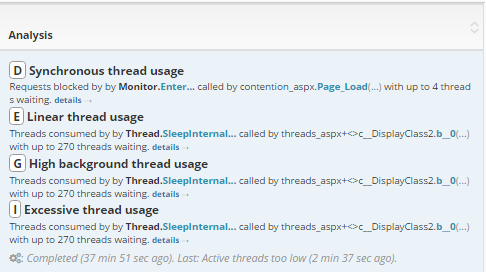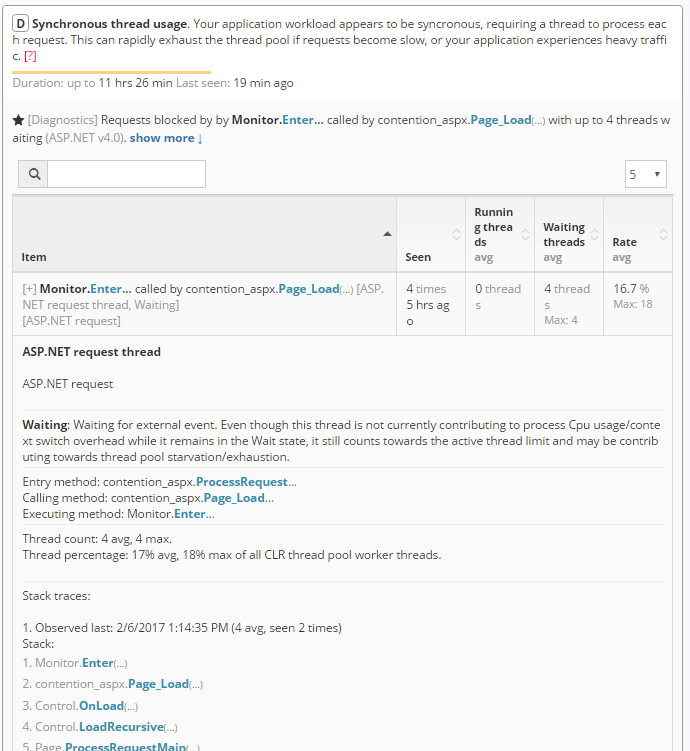This rule measures the ability of the ASP.NET application to scale to higher workloads by tracking it's thread pool usage. It identifies problematic threading patterns that can lead to poor scalability, performance degradation, and hangs as the application's workload increases.
Note that this rule works together with the .NET Thread pool performance rule, where the latter measures actual thread pool performance.
Why is this important
The application's thread usage is a major factor in its ability to effectively scale to higher workloads, allowing it to handle more traffic and fully utilize the server resources. If the application exhibits poor thread usage patterns, it is likely to experience performance "bottlenecks" as workload grows, leading to performance degradation and or full/partial hangs.
Diagnostics
This rule automatically identifies many incorrect threading patterns, and provides code-level diagnostics to help improve the application's scalability.

Review the causes for specific information about problems detected, and use the code-level diagnostics/recommendations to make optimizations.

Many causes will identify the code stacks responsible for consuming the most threads in the application. This way, you can focus on implementing optimizations in portions of your application that have the most impact on overall performance.
Proactive guidance
If you are on a Business plan, we may offer additional guidance to help you optimize your application and improve its performance. To find out more, contact support.
Note that this rule works together with the .NET Thread pool performance rule, where the latter measures actual thread pool performance.
Why is this important
The application's thread usage is a major factor in its ability to effectively scale to higher workloads, allowing it to handle more traffic and fully utilize the server resources. If the application exhibits poor thread usage patterns, it is likely to experience performance "bottlenecks" as workload grows, leading to performance degradation and or full/partial hangs.
Diagnostics
This rule automatically identifies many incorrect threading patterns, and provides code-level diagnostics to help improve the application's scalability.

Review the causes for specific information about problems detected, and use the code-level diagnostics/recommendations to make optimizations.

Many causes will identify the code stacks responsible for consuming the most threads in the application. This way, you can focus on implementing optimizations in portions of your application that have the most impact on overall performance.
Proactive guidance
If you are on a Business plan, we may offer additional guidance to help you optimize your application and improve its performance. To find out more, contact support.
More resources
Want to learn the best techniques for managing your IIS web server? Join our how-to newsletter.
Want to get the best tool for troubleshooting and tuning your web apps? Try LeanSentry free for 14 days.